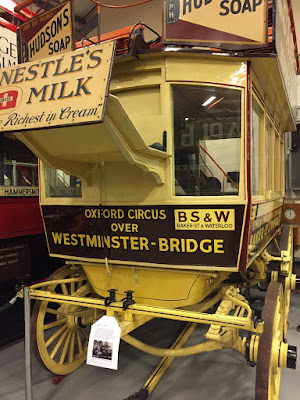London Transport
One of the major reasons why I decided to settle in London during my time in the UK was because of it being the epicentre of transport throughout the city, and the rest of the Kingdom.
Whether you travel on foot, or by bike, bus, taxi, overground/train, plane, tube or ferry, it really is easily accessible. In fact, the underground system is still expanding with a brand new Elizabeth line being installed (with an estimated completion date within 2021), and other projects on existing lines.
The World's First Underground
When the Industrial Revolution spread throughout Europe, the use of trains had become paramount for transportation, as many people moved out of the countryside into major cities for work. As the population of London tripled within the 1800s, so did the need for faster and less obstructive modes of transportation — this meant the phasing out of using the canals and narrowboats within the UK.
A connecting tunnel between the north and south sides of the Thames was conceived as early as 1799 in order to connect the vast network of docks along the river. After 2 failed attempts, and almost 20 years of planning and development, the Thames Tunnel was an engineering marvel used as a pedestrian pathway in 1843.
Shortly after, along came Charles Pearson with the idea to use the newfound tunnel technology to create an underground railway transit system. Despite city approval, the railway companies at the time weren't interested until 1863 with the Metropolitan Railway built from Paddington to Farringdon Street. This railway had gas-lit wooden trains that were operated by steam, and saw 38,000 passengers on its first day in operation and the rest is history.
The Museum Depot
Located in Acton, Ealing, is the TfL's Museum Depot which acts as a warehouse and storehouse of London's transport system and memorabilia. It houses actual evolutionary examples of the tube's train cars and buses, signage and maps.
There's a small section with a wood table and chairs, the original set in the office of Frank Pick, the man behind the design and strategy of the London Underground branding and logo.
It's a really great way to spend a rainy afternoon and you can purchase some patches of the original patterned material used on the system's seats.
Transport Culture
Something I found really amazing about the transit system was the 'culture' of positivity they try to establish with a book corner (take one, leave one system) and daily affirmations written on the whiteboard signs found at every station.
They also feature several artists' work along the stations, a project called Art on the Underground, whose purpose it is to follow in the footsteps of Frank Pick in giving identity to the system.
Decommissioned Tube Stations
A truly intricate web of tunnels, the London Underground has its fair share of abandoned lines and stations, that can still be accessed through the network. Hidden London, as the tours came to be known, provides glimpses into the history of the tunnels as you walk through them with your guide.
I participated in Charing Cross' movie tour, as this network has been used by the film industry to record many subway or tube scenes, such as the infamous chase between 007 and the villain in Skyfall, where they slide down the escalators. They also use this station as a repair/maintenance and testing area for faulty trains.
During the tour, the two guides, who were train operators, told us about the history of the station, and led us through the tunnels to view an undressed area of the station showing the tunnel technology. We also saw the 'cooling shafts' and system used (how air travels with the trains).
Old Routemaster Buses
Even with the constant improvements to the transit system with newer and better models, the classic square-like double decker "Routemaster" is a staple of London, and has been featured in so many movies too numerous to count. Now replaced by sleeker, more fuel-efficient models, you can still ride the traditional bus with rear exit: Route 15, which takes you from the Tower to St Paul's Cathedral and Trafalgar Square.
I grabbed that bus on accident, without knowing it existed to specifically head to St Paul's and I can say that it wasn't the most roomy or comfortable of buses; but for a short ride, it's pretty cool.












Comments
Post a Comment